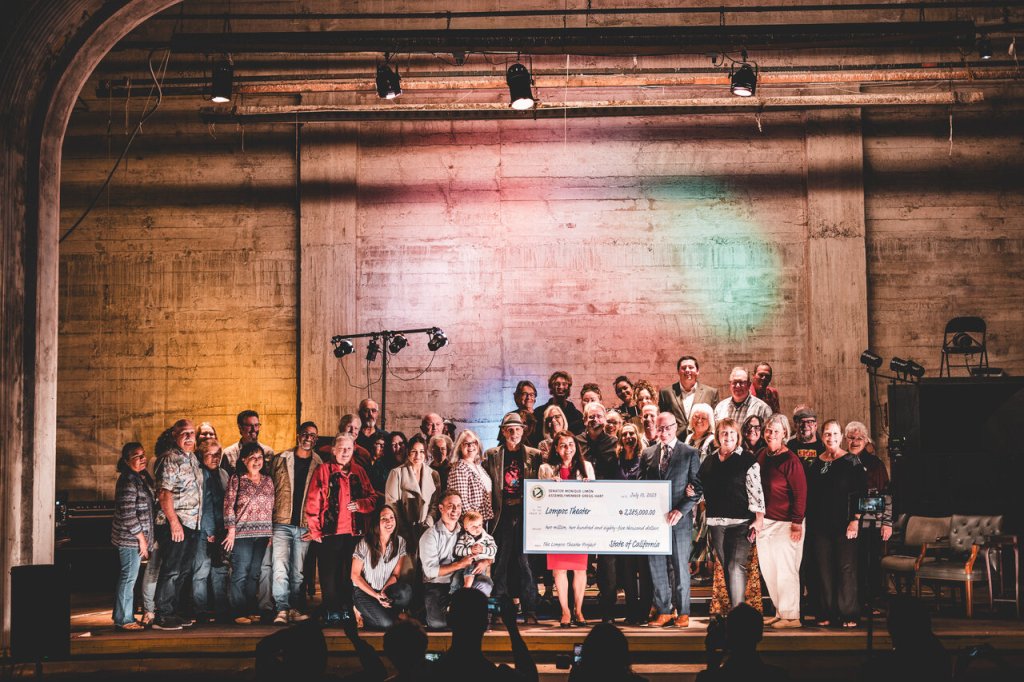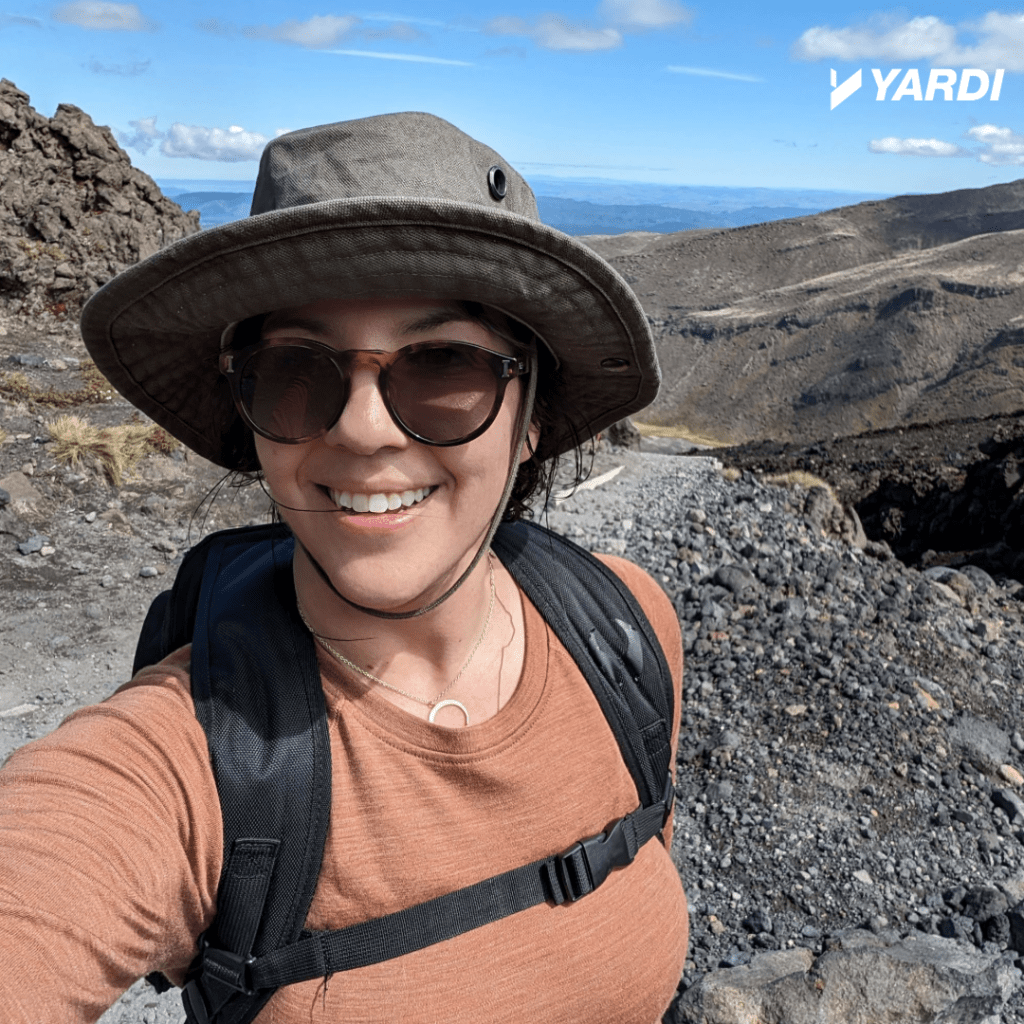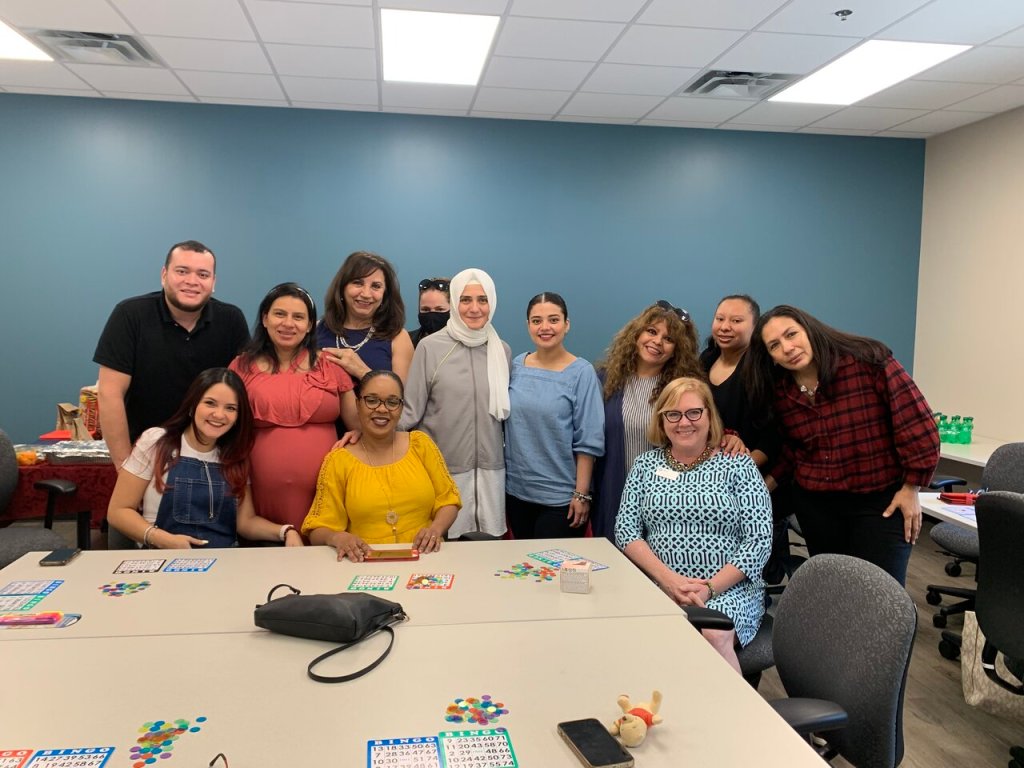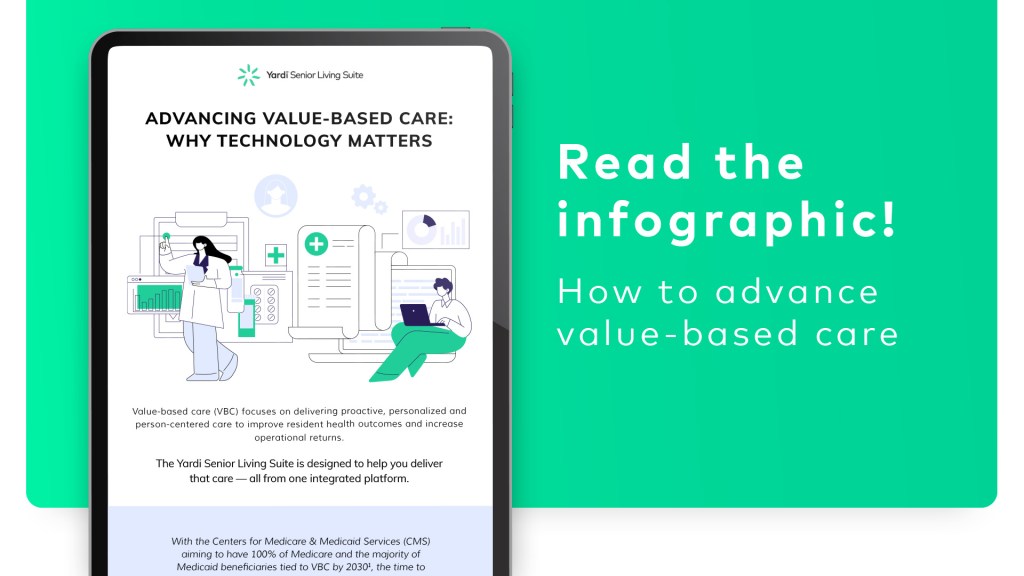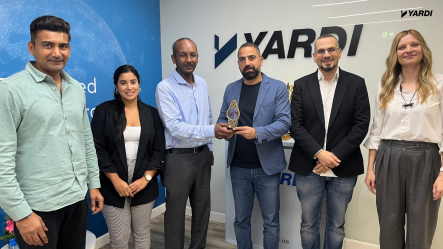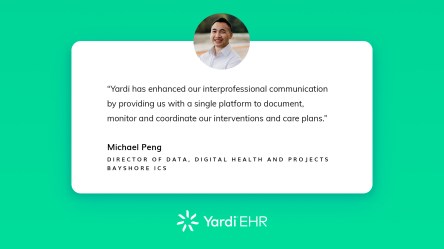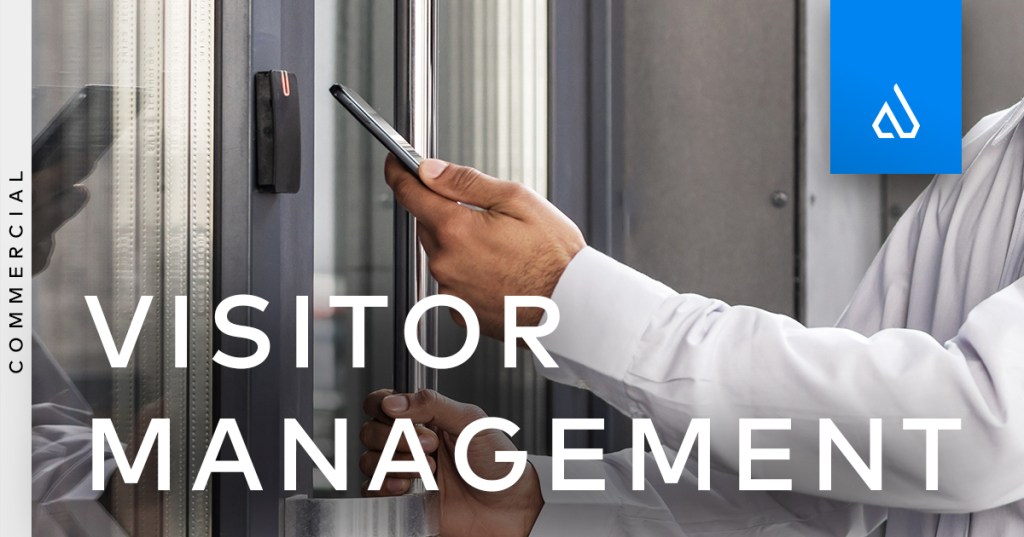Asbestos, a mineral present in certain types of rocks, was widely used in buildings and consumer products starting in the 1800s. Prized for its strength, durability and resistance to heat and corrosion, asbestos served decorative, insulation or fireproofing purposes on decks, roofs, ceilings, plumbing pipes, attics and more, along with automobile components, fabrics and packaging. About 20% of all public and commercial buildings in the U.S. contain some asbestos material, according to the U.S. Environmental Protection Agency (EPA). But the substance was eventually linked to cancers and other diseases of the lung, mouth, throat and other areas, prompting dozens of countries to ban it. A series of U.S. regulations since the 1970s has limited its use, and the EPA continues to set risk evaluation and compliance deadlines to phase it out. Seek expert evaluation, handling If you live or work in a structure built before the 1980s, asbestos may be present in such places as “popcorn” ceilings or vinyl flooring. Does that put you in danger? Not necessarily. “Even if asbestos is in your home, this is usually nota serious problem because generally, material in good condition will not release asbestos fibers. The mere presence of asbestos in a home or a building is not hazardous,” according to the U.S. Consumer Product Safety Commission (CPSC). “Material that is in good condition and will not be disturbed (by remodeling, for example) should be left alone.” The potential for harmful exposure comes when asbestos materials become damaged over time or are disturbed during construction, demolition, maintenance or renovation. These actions can release microscopic fibers that workers, tenants and residents can absorb into their lungs. It’s not possible to tell whether a material contains asbestos just by looking at it. Therefore, property owners, managers or occupants who suspect...
Christina Whitehurst
Yardi Employee Profile
Meet Christina Whitehurst, a principal consultant at Yardi. Her primary focus is implementing the Yardi Investment Suite, a role that manifests her expertise and the significant value she brings to Yardi. Meet Christina Whitehurst Christina Whitehurst has been working at Yardi for five and a half years from the Yardi Long Island office in New York. She spends her work hours managing implementations of Investment Manager, Investment Accounting and Debt Manager for clients, ensuring everyone has a good time while they all work together to build success. A typical day consists of helping some people, coding, and reviewing waterfall agreements and calculations. She uses her accounting and real estate background to help clients and colleagues improve daily. “Every day is different, and I rarely do busy work. I love collaborating and helping my colleagues. Hearing what clients have going on and their daily challenges helps me stay on top of the changing business world,” said Whitehurst. Her passion for her work is evident in every word. Supportive work environment Whitehurst loves Yardi’s corporate culture, which is supportive and dedicated to everyone’s continuous improvement, education and success. The people behind the product make the difference. So much time is put into training and supporting new hires to give their best to support Yardi clients. “We care about you, and in turn, you care for our clients,” noted Whitehurst, showing the nurturing environment at Yardi. Being resilient in making Yardi products better and clients happy has earned Whitehurst multiple awards, which she received from her team members, with whom she’s helped resolve escalations. She is fascinated by Yardi’s founder, Anant Yardi, with the fact that one person can grow a company from one person to almost 10,000, plan the best Yardi parties ever and still be so personable and...
Building Confidence
Connected construction management
Like almost every other aspect of CRE operations, construction management is undergoing digital transformation. Getting real-time insight into the actual performance of projects against budget and being able to compare jobs based on various metrics is only possible with a connected software solution. Integrated construction management software can help with efficient data access, communication, collaboration, resource management, regulatory compliance and asset health checks. What else can construction management software do to deepen insight and streamline processes? For Healthpeak Properties, manual document review and reconciliation of tenant improvement allowances previously took 80 to 120 hours per month. Using Yardi Construction Manager, they are now executed with the click of a button. And that’s just one of the benefits the company reports. Integration issues solved Centralizing projects and all portfolio data on a single platform is a best practice. Relying on multiple databases and manual data entry before adopting Construction Manager prevented Healthpeak from easily tracking its commitments and generating reports on tenant improvement allowances. Bryan Schuh, construction accountant, shared, “We had integration issues with other systems. There were always errors, missing items and time wasted on manual reconciliations.” Enhanced tracking and planning Automated workflows make it easy to track change orders and the status of payables against commitments with one click. According to Schuh, that provides a big advantage over the previous manual process. Further, it’s much easier for the company to set up projects in the system.Construction Manager also enhances visibility into Healthpeak’s capital planning. Project managers can easily see which projects have been approved, and centralizing all portfolio information in one readily accessible database has helped the company extend its capital planning from five years to ten years. More efficiency with deal and forecast integration The integration of Construction Manager with deal and forecast management tools (Yardi Deal Manager and Yardi Forecast Manager) further streamlines the revenue lifecycle by enabling clients like Healthpeak to accurately assess and track project costs and timelines. Construction Manager houses monthly/quarterly/yearly job forecasts based on real-time projected final costs and capital expense projections for future years. Project managers quickly and easily create or update job forecasts spreading cost to complete over linear, front-loaded, back-loaded or normal curves. For Healthpeak, automatic population of deal abstracts into Construction Manager from Deal Manager saves many hours of time previously spent on error-prone manual data input. “This integration produces better budgeting and gives us a more accurate portrayal of our project commitments,” Schuh said. “It has saved a lot of people a lot of headaches and prevents us from overpaying on commitments.” Learn more about Yardi Construction...
Maximize Efficiency
In Your LPC/CCRC
Regardless of which type of life plan community (LPC) or continuing care retirement community (CCRC) you serve, it’s crucial to recognize the value technology brings. Our new ebook shares more — covering the value of single connected solutions like the Yardi Senior Living Suite. How do LPCs/CCRCs benefit from technology? LPCs/CCRCs offer long-term care to seniors who wish to age in place as they progress through multiple levels of care. With a continuum of care being offered, residents access everything they require, as their needs evolve. Not only can technology equip LPCs/CCRCs to streamline operations and optimize care services, but it also helps save time, prevent errors and empower staff. Integrated, single-stack solutions offer the most value (especially those designed for the unique needs of senior living). That’s because with tools uniting on a single platform, you eliminate the need to license multiple systems — and navigate multiple platforms — boosting efficiency in ways disparate systems can’t match. Explore the Yardi Senior Living Suite The Yardi Senior Living Suite is a fully integrated solution that unites community management, finance, marketing, business intelligence, resident care and more in one secure place. When you choose Yardi, you access a complete senior living software toolkit — all built to meet the needs of your communities — including: Property management and accounting. Business intelligence and analytics. Electronic health records. Electronic medication management. Customer relationship management. Resident and family portals. Wellness and activity monitoring. Our comprehensive technology is also HIPAA and SOX-compliant, built to support value-based care, recognized as a Forbes Cloud 100 platform and designed with 40+ years of industry experience. Start your journey with us Ready to power your LPC/CCRC using one solution? Reach out to get a closer look at the Yardi Senior Living Suite. Want...
Yardi EHR & SafelyYou...
New integration!
We’re happy to announce that Yardi EHR officially integrates with SafelyYou®, the leader in empowering safer, more person-centered care across senior living through world-leading artificial intelligence (AI), industry-changing hardware and remote expert clinicians. With accurate and complete resident data readily available, communities can optimize care planning, improve resident outcomes and maximize margin. Learn about SafelyYou Originating in 2015 as the doctoral research of CEO George Netscher — and inspired by his own family’s experience with Alzheimer’s disease — SafelyYou was spun out of UC Berkeley’s Artificial Intelligence Research Lab, one of the top five AI research groups in the world. The company’s passionate mission is to empower safer, more person-centered dementia care through world-leading, real-time AI video technology and 24/7 remote clinicians. See how Yardi EHR integrates with SafelyYou With the interface, Yardi EHR clients will benefit from SafelyYou’s critical care insights, including staff time spent in-room, time spent on direct care vs. indirect care and resident time spent alone. This data is combined with other important care information in Yardi EHR, creating a more robust picture of resident health. SafelyYou offers this data through SafelyYou Clarity™, senior living’s first and only choice for automatic, accurate care measurement without wearables. “The interface between Yardi EHR and SafelyYou is a step forward in improving resident safety and enabling value-based care models,” shared Fil Southerland, director of health care solutions at Yardi. “We’re proud of this partnership and aim to continuously evolve how we help clients improve resident outcomes.” Get in touch with us Learn more about Yardi EHR, our fully integrated electronic health record solution designed for senior living. To get more information on SafelyYou, visit the SafelyYou website. And if you have any questions about the new integration, be sure to get in touch with our...
Lompoc Theatre Project
Life Enriching Moments
The Lompoc Theatre Project, a Yardi-supported nonprofit organization, is dedicated to restoring the historic Lompoc Theatre. This iconic venue, a part of the community’s history for over a century, will be re-opened as a performing arts and film center, an educational and community hub, and a focal point of a revitalized Old Town Lompoc. Established in 2012 in Lompoc, Calif., for the greater Central Coast community, The Lompoc Theatre provides life-enriching moments for the hardworking families of Lompoc and the local artists searching for affordable and accessible options in one of the most historically acclaimed venues in the heart of Small-Town America. “We are dedicated to giving a voice to all cultures and backgrounds, enriching the lives of Lompoc families one moment at a time,” said Mark Herrier, executive director for Lompoc Theatre Project. Lompoc Theatre Project is working on completing the Phase Two plan to move the Historic Land Office back onto Main Street, install new dressing rooms and restrooms, and complete renovations to the Lompoc Theatre Stage and Fly Tower, enabling regular live performances in the theatre for the first time in 60 years. Yardi funding helps the organization accomplish these goals. “The grant we received from Yardi was unexpected and appreciated. It became a key part of our matching grant campaign, raising 200k in six months. It also confirmed that our cause is just and that we are being recognized for the decade of hard work we have put in, independent from our outreach efforts,” explained Herrier. Overcoming seven years of failed leadership and apathy, the Lompoc Theatre Project has taken ownership of the building. Local volunteers and donors have driven this project, raising $ 3 million in the last three years. Their unqualified support has paved the way for the reopening of the Historic Lompoc Theatre, a significant milestone in the city’s history. “When completed, it will be the beating heart of the City of Lompoc, generating millions of dollars of economic activity and giving a voice to the underserved diversity that characterizes our proud city,” expressed Herrier. Volunteer Opportunities Volunteers and small donors are always welcome to help with the Lompoc Theatre Project since they significantly impact this organization. For more information, don’t hesitate to contact them on its website here. Find future non-profit profiles at https://www.yardi.com/blog/category/giving. Yardi is Energized for Good! Visit www.yardi.org for more about our philanthropic...
Laura Sacks
Yardi Employee Profile
Laura Sacks, a senior manager who works on Yardi’s investment management product suite, celebrates her fifth year at Yardi this November, giving her the benefit of four months in the office with colleagues before the world went remote during the pandemic. Yardi was Sack’s first corporate job, which she applied for with guarded optimism from referrals within the company and a dash of healthy skepticism since she is a relationships-oriented individual, so she was curious about how collaboration and connections would manifest in this space. She immediately found the spirit of exceptional generosity within the Yardi culture! “There is an energy of focused growth through the company that is achieved through discourse, creativity and collaboration that I find both energizing and inspiring,” said Sacks. Sacks spends her workdays working with clients, meeting with her team and developing special projects to facilitate growth and collaboration. Because Yardi, the products, and our clients constantly evolve, knowledge is forever growing. “I truly love how every day holds the potential for something slightly different from the day before and the ability to learn something new. Should you approach each day with a builder’s mindset and a willingness to say “yes” whenever possible, the opportunities for learning and growing at Yardi are endless,” exclaimed Sacks, her enthusiasm for continuous learning and growth shining through. Sacks reflects daily on advice about communication since her role is primarily about good communication and collaboration. She wants those to know that when communicating remember that clear is kind and unclear is unkind, “even if the topic is hard for you and/or the recipient, ambiguity is harder.” Evolving products Sacks prides herself on a project series of time-weighted performance calculations she built without knowing much about calculator analytics or time-weighted returns beforehand. “I appreciated the...
North Fulton Community Charities
Meeting Community Needs
This Yardi-supported nonprofit does it all! North Fulton Community Charities (NFCC) aims to help ease the hardships and foster financial stability in its communities. North Fulton Community Charities was established in 1983 in Roswell, GA, and serves over 9,000 residents in need in North Fulton County, including families. NFCC offers five programs of service to support both short and long-term economic stability: Rent/mortgage/utility assistance Client choice food pantry Clothing choice Seasonal support No-cost education and workforce opportunities By working with individuals through these programs, NFCC focuses on preventing homelessness by offsetting food, clothing, and seasonal costs. This ensures families can use those saved funds for other household expenses and provide opportunities to gain critical skills that lead to higher wages and better jobs. “Our priority is to offer programs and services that meet the community’s needs and will create the most meaningful impact for those we serve,” said Sherri Morgan, director of development for NFCC. Yardi’s funding has been instrumental in helping local at-risk families remain safely housed by providing direct rent, mortgage, and utility assistance. In 2023 alone, NFCC, with the support of Yardi, prevented homelessness and utility disconnection for 1,581 local families. NFCC’s team of caring case managers meets each family eligible for financial assistance and recommends aid to prevent evictions and utility disconnection while also providing critical referrals to other programs, both internal and external, to fill gaps in need. “Preventing homelessness is crucial to allow children to stay in school, allow parents to continue working, and stabilize families so they can access resources that will advance them on their journey to economic independence,” explained Morgan. In addition, the growth and success of NFCC’s programs are a source of pride for the community. With over 40,000 orders in the last year, the food pantry has saved users $4.7 million in grocery costs. The education program, NFCC’s fastest-growing program, has launched additional classrooms this year and two off-site to accommodate over one hundred adults on the waiting list for English classes. Now, the list is down to almost zero. NFCC’s commitment to removing barriers to its client’s resources by providing transportation and free child care to families is evidence of its dedication and impact. “We at North Fulton Community Charities are incredibly grateful to Yardi for their commitment to improving our community. Their generous contribution will ensure that North Fulton families facing financial hardship remain safely in their homes and are equipped with the tools they need to move toward greater financial stability,” said Morgan. Yana’s Ukraine Journey Yana came from Ukraine a year ago with her husband and three children after her husband secured work with an American logistics company. Escaping the war-torn country, she left a successful accounting business and arrived in the United States with little English. Yana was eager to enroll when she heard about NFCC’s English as a Second Language (ESL) program at her church. She began attending ESL classes in May 2023, and her family embraced English immersion. Yana moved quickly through the ESL classes and enrolled in NFCC’s GED program. The GED program allowed her to continue working on her English skills and earn her credentials to secure work. Even though Yana had earned a degree while living in Ukraine, a bomb hit her university in Ukraine, and all records were destroyed. Earning a GED would allow her to rebuild her life in North Fulton. On February 27, 2024, Yana earned her GED. Now, she is enrolled in classes at Interactive College of Technology and plans to return to working in accounting. “This GED program improves English vocabulary, and the atmosphere is very friendly. Thank you for your support at every step,” said Yana. Yana told NFCC program manager Wynona Kuehl that she is enjoying her new home. “It is similar to Kyiv, the motion of life and the comfort. The people smile and are friendly.” She also said, “I like...
New Nutrition Module
Yardi EHR
We’re excited to announce a brand-new nutrition module in Yardi EHR! This module was created based on feedback from our senior living clients. The nutrition module provides one intuitive place to see all nutrition intake — and output if applicable — for each resident. Streamline nutrition management with Yardi EHR In order to optimize care outcomes in senior living, you need to efficiently manage resident nutrition. With that in mind, we developed a brand-new nutrition module in Yardi EHR — our integrated, full-service electronic health record solution. The innovative module offers a centralized place to track all nutrition-related data for residents. Not only does this streamline workflows for food and nutrition staff, but it also empowers caregivers to provide personalized, effective care. At a glance, staff can view a resident’s dietary intake, BMI and weight gain or loss. They can also see a resident’s nutritional preferences, current dietary orders and allergies — all in one place. There’s the option to add meal and intake information, too, as well as output charting (if necessary). Learn why we developed this module It’s challenging for staff to track resident nutrition without dedicated resources. Caregivers have to navigate multiple modules — primarily the assessment and vital sign sections — to document dietary intake and preferences. Not only is this approach inefficient, but it also leads to confusion, since vital-sign templates get cluttered with unrelated data. This inspired us to create the nutrition module, which alleviates these challenges, streamlines nutrition management and improves resident care. Explore key features of the nutrition module The nutrition module consolidates vital information in one easy-to-access area, allowing you to: View resident intake at a glance — staff can quickly assess a resident’s dietary intake, weight fluctuations and BMI without sifting through multiple systems. This...
Workplace Workouts
Keeping Fit on the Job
Perhaps you’re spending more time in the office these days and lost your proximity to the gym or other favorite daytime workout location. But did you know that workplaces offer abundant opportunities for maintaining physical fitness? “Just because you have a desk doesn’t mean you have to sit at it for eight hours straight,” according to the American Heart Association. “Depending on your office situation, you could fit cardio and strength training into your workday,” adds Dr. Eric Moogerfeld, a physical therapist and athletic trainer with the Cleveland Clinic. “If you have to work at a desk, there are ways to make your desk work for you.” The AHA and other experts suggest: Moving around when you take a break rather than sitting in place. If you sit at a desk, stand up from time to time. March in place, or pace in a circle to keep moving. Alternate sitting and standing throughout the day with walking and stretching. Scheduling physical activity time on your work calendar – just like any other important appointment. Doing simple hand and finger stretches, abdominal stretches, seated leg extensions, oblique twists, chair calf raises and hip flexions. If possible, installing equipment such as bike desks, standing desks that support proper posture, treadmill desks, under-desk bicycles and ellipticals. Checking if your employer offers an onsite gym or exercise equipment. Maintaining an ergonomically sound workplace. “Whether it’s five minutes or an hour of movement, there are real health benefits to any type of activity during the workday,” says Sandy Todd Webster of IDEA Health & Fitness Assn., a San Diego-based fitness and wellness professional organization. “If you are able to walk or power yourself forward by some means, do it. You don’t need a gym. Movement opportunities are...
Risks and Rewards
Yardi Matrix Multifamily Webinar
Yardi Matrix vice president Jeff Adler again delivered a master class on the current state of the multifamily sector during an Oct. 23 webinar. The recording and presentation slides are available to view online. Multifamily is experiencing robust performance despite a significant influx of new supply, particularly in the Sun Belt and Mountain West regions. Although advertised asking rent growth for new leases has softened—often turning negative—units are still being absorbed. Overall, most markets are experiencing a healthy three to five percent growth in both occupancy and renewals. “The multifamily industry has really performed quite well given the unbelievable amount of new supply that’s been coming in,” Adler said. In the top 20 markets tracked by Matrix analysts, the multifamily sector is grappling with substantial new supply, with approximately half a million units set to be delivered this year. Renter-by-necessity units (Class B to C assets) are now outperforming lifestyle units (Class B+ to A assets). This is largely due to the nature of new construction, which tends to cater to the higher end of the market. This has led to some challenges for owners of lifestyle properties, as the influx of new supply dampens their performance. Retention rates are returning to pre-pandemic levels, largely driven by affordability issues in the single-family home marketplace. This trend suggests that many renters are opting to stay put, contributing to a higher number of positive renewal lease trade-outs, even in markets experiencing rent declines. This trend highlights the critical role housing affordability plays in the current market landscape. Adler discussed some of the specific challenges for affordable housing supply in great detail – tune in to the recording for more insights. The bottom line is that more housing will need to be constructed to resolve the nation’s affordable housing problem. Fewer new stock deliveries are expected in 2026 and 2027, which means the stage may be set for a potential spike in multifamily rent growth, Adler forecast. An overarching shortage of U.S. housing is unlikely to improve in the next five to ten years, suggesting a strong investment thesis for multifamily housing. As capital costs normalize, transaction activity is expected to increase. While some distress may appear in specific areas, the multifamily sector remains resilient and poised for continued long-term growth. In a new format for Matrix, the webinar also included identification of potential investment opportunities and a comprehensive look at the state of the economy. Listen to learn more. “The economy is pretty healthy at a macro level. But there are cracks in the economy emerging, and at some point, those cracks have to come to fruition and be resolved,” Adler...
Advancing Value-Based Care
Why Technology Matters
With the Centers for Medicare & Medicaid Services (CMS) aiming to have 100% of Medicare and the majority of Medicaid beneficiaries tied to value-based care (VBC) by 2030, the time to implement VBC is now. Explore our new infographic to see how the Yardi Senior Living Suite helps you seamlessly deliver VBC — all from one integrated platform. See how the Yardi Senior Living Suite supports VBC Enhance communications among residents, families and the entire care team. Gather data-driven insights to identify at-risk residents and offer preventative care. Empower staff with interoperable workflows, personalized to meet resident needs. Support community wellness programs that boost resident engagement. View actionable trends to ensure comprehensive population health management. Access a digital signature workflow to enable quick adaptation of care plans. Use health care data to report on resident status during transitions of care. Participate in value-based care reimbursement models. Share a cohesive picture of resident health with physicians, health systems and more. Connect to a thriving ecosystem of monitoring and fall detection systems to supplement staff observation and reduce adverse events. Take a closer look at our fully integrated tools The Yardi Senior Living Suite combines resident care, marketing, sales, finance, business intelligence, pharmacy, operations and more on a cloud-hosted, HIPAA and SOX-compliant software platform. As it relates to VBC, you can: Enable real-time information sharing with Yardi EHR, our full-service electronic health record solution. Access clinical trends and population health with Yardi Senior IQ, our comprehensive business intelligence solution. Improve resident engagement with RentCafe Wellness, our dynamic wellness management solution. Hear from our partners “Senior living operators need tools that allow them to communicate proactively as an integrated team with care providers, patients and families to be successful in value-based care,” explained Amy Kaszak, executive vice president of strategic initiatives at Curana Health. “This means that they need technologies that integrate across the continuum and that enable workflow-based alerts and processes.” “We appreciate Yardi’s efforts to advance the technology needed to support the senior living industry’s move to value-based care,” shared Alan Fairbanks, president of the value-based care alliance at Serviam Care Network. We’re here to help Ready to chat with team Yardi? Reach out to book a meeting. We’ll share more on how our single connected solution supports...
Médecins Sans Frontières...
Doctors Without Borders
Yardi-supported nonprofit Médecins Sans Frontières (MSF) was established in 1971 with headquarters around the EU, including Paris, Barcelona, Athens, Brussels, Amsterdam and Geneva. The organization provides medical assistance to people affected by conflict, epidemics, disasters or exclusions from healthcare. Its teams comprise thousands of health professionals, logistics, and administrative staff, most of whom are hired locally. Medical ethics and impartiality, independence and neutrality guide its actions. MSF has a future focused on addressing the escalation of humanitarian crises, particularly in Sudan, which demands its full attention. It is also deeply committed to ongoing emergencies in regions such as Palestine, Lebanon, and Yemen, where healthcare access is limited. Additionally, MSF continues to advocate for these underreported and forgotten crises, ensuring that those affected receive vital medical care. “Our priority remains to be on the front lines where the need is greatest, regardless of media coverage or visibility,” said Angelly Cabrera, partnership manager for MSF UAE. Funding from Yardi is not just critical; it’s transformative. It enables MSF to respond to crises, especially during the most challenging and unpredictable moments. The sustained support from Yardi allows MSF to plan and act quickly, ensuring that it is on the ground where and when they are needed most. This is not just about funding that makes a difference. It’s about the belief in MSF’s mission and trust that drives them forward. Yardi’s support is not just a contribution. It’s the power of collective action and the difference we make when we stand together. “One of the greatest strengths of this partnership is the trust that Yardi has placed in our field teams, which is vital for maintaining the independence that defines MSF. This independence empowers us to prioritize medical care based on needs alone, without being influenced by political or...
Romanian Maltese Relief Organization
Asociatia Serviciul de Ajutor Maltez in Romania
The Romanian Maltese Relief Organization is a Yardi-supported non-governmental association that, during its 33 years of activity, has contributed to changing the destinies of thousands of people in difficulty. This organization was founded in 1991 in Cluj-Napoca, Romania and is defending the faith and helping those in need by continuing to be involved in the community and offering the needed help. When it started its services, the Romanian Maltese Relief Organization aimed to assist children, and now it boasts of recovered young people and adults who are helpful to society. It also provides a social program called Maltese Kindergarten, a daycare for children with neuromotor disabilities. During its years of activity, the Maltese Kindergarten offers education and recovery services to more than 400 special children, many of whom have become independent adults today. The daycare has been certified as a Psychology Structure by the Romanian College of Psychologists. It has been licensed by the Ministry of Labor and Social Solidarity as a social service center since 2005. It has a team of six therapists dedicated and committed to the love of the children, primarily exclusive specialists, psychology graduates, psychological counselors, unique psych pedagogy and physical therapists who have all been certified by the Romanian College of Psychologists. Early personalized therapy can help these children to have a chance for recovery, discover life independently and even go to school. Through its daycare center, the Romanian Maltese Relief Organization provides education and recovery services from an early age. “It is difficult to imagine being a parent of a child that is living with a disability. It is even harder to imagine being a child with disabilities. You couldn’t explain to your mother what hurts you, you couldn’t reach out for your favorite toy, or you couldn’t eat chocolate. These are all simple things that make the difference between living and existing,” explained Mirela Codreanu, director of Romanian Maltese Relief Organization’s Maltese Kindergarten. This year, the Romanian Maltese Relief Organization has opened the first inclusive Playground in Cluj-Napoca, a playground to which Yardi funding contributed in 2023 and 2024. This playground is a first of its kind and, through its attractive and complex design, will bring together children with and without disabilities. This concept was created through Symphony of Friendship, another beloved social project. Its goal is to ensure children with physical and mental disabilities have equal rights to approach public spaces for relaxation and play and to encourage inclusion through play. “This project is important to us because it can contribute to changing mindsets, open opportunities, and new ways to see the vulnerable. We dream about a society that is more tolerant and helpful with those who have a disability, a society that stops pushing away the different ones but embraces it,” said Codreanu. In addition to the playground, Yardi funding helps continue the charitable work at Maltese Kindergarten, allowing the Romanian Maltese Relief Organization to create a safe space for any child who needs special education and recovery. This benefits the less fortunate, special and vulnerable children. “We managed to be that much-needed support, thanks to your implication. I want to encourage you to turn your attention to these programs for special children because you help us support those in much need,” expressed Codreanu. Raul’s Pathway to Hope Cheerful, shy six-year-old Raul had social, motor and communication barriers before he came to Maltese Kindergarten. When he arrived, his diagnosis reflected the fact that he did not walk, speak, eat, and did not understand anything. However, shortly after his adventure started as a “Maltese” child, he gradually managed to explore every corner of the house. First, he crawled, and then, with help from a walker, he soon found himself able to walk after one year of physical therapy. With patience and perseverance, Raul became more receptive to those around him, learning new words and understanding others. After the first year, he...
OWCAP
Creating Positive Change
OWCAP helps people help themselves and each other. Yardi-supported nonprofit Ogden-Weber Community Action Partnership, Inc. (OWCAP) was established in 1965 in Ogden, Utah. It is working to elevate individuals and families in Weber County through services and collaboration. OWCAP is a part of the National Community Action Network, created under President Lyndon B. Johnson’s War on Poverty. Its current programming includes Head Start and Early Head Start programs, Circles of Weber County, Volunteer Income Tax Assistance (VITA), Roy Communities that Care (CTC), landlord/tenant mediation and housing education, and education/employment assistant services. Being a Community Action Agency means embodying the spirit of collaboration through strong community partnerships. These partnerships with local organizations, businesses, and residents are crucial to its work. They help address and respond to the community’s ever-changing needs and make community members an integral part of its efforts. It involves a commitment to understanding and adapting to the unique challenges and opportunities within the community, leveraging collective resources and expertise to create effective and sustainable solutions. “By fostering these dynamic partnerships, we remain agile, responsive, and impactful in improving the quality of life for our community—helping people and changing lives,” said Christine Ipsen, executive director for OWCAP. OWCAP focuses on improving programs by improving the overall health and well-being of participants and staff, prepares children and families for kindergarten and future education success, empowers low-income clients to increase self-sufficiency and operates as an influential, innovative organization that is an asset to low-income communities. Its strategic goals behind the programs include expanding the capacity of current programming, implementing a communication plan to include branding and advocacy, supporting staff by providing a model working environment and being a collaborative partner in meeting the community needs. Community Action Agencies also have a Community Action Plan (CAP...
Yardi EHR Success
Hear From Bayshore ICS
“Yardi has enhanced our interprofessional communication by providing us with a single platform to document, monitor and coordinate our interventions and care plans.” We recently interviewed Michael Peng — director of data, digital health and projects at Bayshore Integrated Care Solutions (ICS) — to get insights like the one above. Peng and his team shared how Yardi EHR (and additional solutions in the Yardi Senior Living Suite) have transformed Bayshore’s operations for the better. Read the success story to see Bayshore’s transformative journey, including where they are today. The Challenge: Inefficient Paper Processes Bayshore ICS previously used paper processes that were time consuming, susceptible to errors and difficult to maintain. Paper workflows also meant information was scattered across locations — and wasn’t easily retrievable — risking inconsistencies that could affect resident safety. Bayshore ICS sought a single connected solution that would centralize everything needed in one secure place. The Solution: Yardi EHR Yardi EHR is an integrated, interoperable electronic health record solution designed for senior living. This single connected solution combines the clinical intake process, medication management, charting, behavior management and more on a browser-based platform. The Story: Centralizing Workflows, Saving Time & Empowering Staff Before Yardi, Bayshore ICS relied on paper for charting, assessments, medication management and more, which brought an array of challenges. Not only was there a lack of standardized practices across TCU locations, but paper also made it difficult to store and retrieve information, evaluate the clinical effectiveness and complete audits. Not to mention, paper workflows posed challenges for supporting care remotely. The obstacles paper workflows created didn’t stop there. Communicating information across teams wasn’t optimal, causing staff members to feel siloed. Communication during emergency transfers was particularly inefficient since caregivers had to manually transcribe data or photocopy charts. Since...
Early Tech Showcases
World’s Fairs Through the Centuries
World’s fairs – international exhibitions of industrial, scientific and cultural advances held at a specific site for several months – boast centuries of history as forums for transformative technologies. The largest steam engine ever built, the telephone, the typewriter, the mechanical calculator, the Ferris wheel, a prototype fax machine and the Ford Mustang are just some of the inventions showcased at world’s fairs. In 1893, alternating current powered the World Columbian Exposition in Chicago, leading to the widespread use of electricity in homes and businesses. World’s fairs also helped “instill confidence in a public still getting used to the idea that many of the goods they use every day were now being made using machines, rather than by hand,” according to Elizabeth Yuko, an adjunct professor of ethics at Fordham University. The modern era of world’s fairs launched in 1851 with the Great Exhibition of the Works of Industry of All Nations in London, 60 years after the first industrial exhibition in Prague. Since then, more than 100 world’s fairs have been held in more than 20 countries. The U.S. Centennial Exhibition in Philadelphia, the first held in the U.S., drew almost 10 million attendees in 1876. Many fairs also featured art, entertainment, cultural exhibits and rides. Fairs have often taken place against a backdrop of futuristic new structures such as the Eiffel Tower, at the time the world’s tallest tower (Paris, 1889); the Atomium (Brussels, 1958); the Space Needle (Seattle, 1962); and the Unisphere (New York City, 1964). Some fairs, such as those in Brussels and Montreal (1967), gave Cold War rivals a stage for space hardware and other advanced technology. (Although generally classified as a world’s fair, the 1964 event was not sanctioned by Paris-based Bureau International des Expositions, which governs and...
Paper to High Tech
The Evolution of Passports
If you travel internationally, you must have a passport. One hundred sixty-one million holders of valid U.S. passports take that fact for granted, but this document took centuries to evolve from a frill into a mandatory border-crossing asset. The modern era of passports began when Louis XIV, king of France from 1643 to 1715, issued favored citizens a “passe port” signifying “approval to pass through a seaport.” American passports in the late 1700s were also reserved for select constituents. “The most famous early U.S. passports were issued by Benjamin Franklin when he was U.S. representative in France in the late 1780s,” says Craig Robertson, author of The Passport in America, and mostly served as “letters of introduction that verify the character of the person bearing them.” Passports in the 19th century typically comprised single-sided pages containing the bearer’s name, age and other basic identification. They were often utilized for single trips. Cities and notaries public could issue them until 1856, when Congress made the Department of State the sole issuing authority. By the late 1800s, “U.S. passports were becoming more mainstream, but they were still considered more of a travel perk for the holder than a requirement to cross borders,” says Jessica Puckett, a transportation and travel writer for Condé Nast Traveler. Setting a global standard In 1920, the League of Nations proposed a worldwide passport standard, introducing the modern format of a small booklet with pages for stamps. By 1926, American passports started to resemble today’s model: pocket-size booklets with multiple pages and durable material. By 1952, all American citizens were required to have passports to depart from or re-enter the United States, except for certain countries in North America and Latin America. Their shelf life increased from two years to three in 1959, to...
Regan Heydari
Yardi Employee Profile
Yardi’s global offices are crucial in property management and investors worldwide. Today, we introduce you to Regan Heydari, the Global Solutions Commercial TX practice team director at the forefront of this global mission. Meet Regan Heydari Regan Heydari, a key individual at Yardi for the past 13 years, holds a pivotal role in the Commercial support of the central region. Her responsibilities include leading a dynamic team that is committed to delivering top-tier support to Yardi’s commercial clients. Her multifaceted role involves strategic planning, problem-solving, and ensuring clients receive the highest quality service. “Over this time here at Yardi, I’ve seen the company grow and evolve, and I’ve had the privilege of contributing to its success,” said Heydari. Heydari spends her workdays with a blend of client interactions and team collaboration. Her most significant time is spent assisting clients with their needs and challenges while supporting and mentoring a team to ensure they deliver exceptional service. Energized for Good Heydari loves the variety of her day, which energizes her, “Every week brings new challenges and opportunities to work with different people. This constant change keeps my job exciting and fulfilling,” explained Heydari. Yardi’s unwavering willingness to help and collaborative culture make it an inviting workplace. No matter who reaches out, someone is always ready to jump in and collaborate on solving a problem. New hires can look forward to a supportive workplace filled with passionate individuals and a place where contributions are valued. “The spirit of teamwork and mutual support is truly remarkable,” expressed Heydari. Yardi is hiring globally! Interested prospective employees can explore opportunities on the Careers site. Game-changing success Direct focus on one task at a time instead of multi-tasking has been a game-changer for Heydari’s productivity and effectiveness. Heydari is proud to...
You’re Welcome
Visitor Management Software
If you’re in CRE, you already know the challenges of managing and tracking visitor access at your properties. You need to know who is entering and for what purpose, how long they stay and when they leave. This can place a burden on site reception teams and can also lead to a frustrating experience for visitors who must wait for authorization to gain access including for scheduled appointments. New tech makes this process easier for everyone and reduces risk through automation and tracking tools for reporting purposes. Whether you’re an owner or landlord, building manager or corporate occupier, a visitor management solution (VMS) provides a welcome experience for short-term visitors, event attendees, contractors and staff. Connect people and buildings Wondering exactly how a VMS can help your building operations and the people you interact with at your sites? If you’re a landlord or owner, you can deliver a smarter building to attract the best tenants. A VMS such as Yardi Bluepoint can increase retention by providing a great experience for those working and visiting, plus you can analyze visitor data for oversight of your portfolio and its utilization. Building managers can predict staffing requirements to maximize reception utilization and manage visitor volume. For increased security, managers can configure access permissions for tenants and visitors. Corporate occupiers can empower staff to create branded appointments, view pre-visitor information and receive instant notifications when their visitors arrive. Here are some key benefits to consider: Faster check-in: shorter wait times and instant arrival notifications. Flexible visitor management: time-limited access with this easy-to-use software. Visitor appointments can be created using the calendar app or website portal. Contactless check-in: with Bluepoint, visitors can be checked in by site receptionists through the portal or via a kiosk with QR code, PIN or name. Enhanced security: building managers can proactively manage visitor flows and configure access permissions for tenants and visitors. It also provides additional layers of building security. Customizable experience: corporate occupiers can create branded visitor invites, request pre-visit information and receive instant visitor arrival notifications. Real-time visitor data: staff, tenants, reception teams and building management can access real-time visitor data for strategic decision-making on staffing, space utilization and compliance. Yardi Bluepoint value adds Oversight with real-time data: Bluepoint provides actionable insights to enable safer and more efficient management of your spaces. It helps you stay up to date with planned visitors and keep account of drop-in visitor numbers. You can plan for reception services, security and visitor amenity requirements by reviewing Bluepoint data. Tenant empowerment: Bluepoint allows you to manage access permissions for meetings and events and enables your tenants to book time-limited appointments by visitor type. It can integrate with existing tenant management software to provide a seamless experience. Bluepoint is compatible with all calendar apps, so visitors can be invited directly from any calendar including Outlook and Gmail on a desktop or mobile device. Security and compliance: Bluepoint is GDPR compliant and helps you stay current with visitors in your building for critical security and compliance. It provides an accurate overview of who is where and at what time in your building with a check-in and check-out process. You can implement additional security with time-limited, temporary access passes for visitors and staff. Contactless access: Bluepoint allows for smart access using existing access control with a mobile QR code or access card. Activated Bluepoint QR codes can be used with speed lanes, elevators and even meeting rooms. It facilitates contactless check-ins with a free-standing or desk-mounted kiosk. Easy to integrate: Bluepoint’s fully featured API allows for smart connections with new and existing building management technology. Access control integrations with leading manufacturers and tenant engagement platforms allow for an improved experience. Ready to connect people and buildings to optimize operations and satisfaction? Learn more about Yardi...






